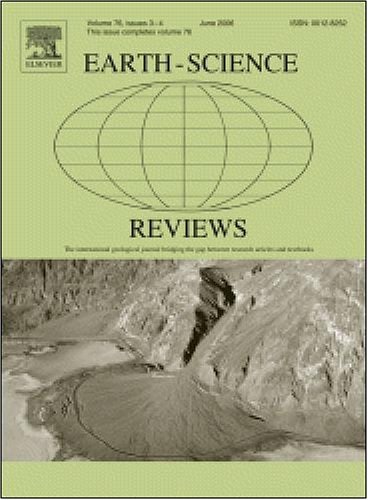The 4.2 ka event in the Northern Hemisphere: Spatial heterogeneity and driving mechanisms of hydroclimatic change
IF 10.8
1区 地球科学
Q1 GEOSCIENCES, MULTIDISCIPLINARY
引用次数: 0
Abstract
The 4.2 ka event (~4300–3900 yr BP), marking the boundary of the middle-late Holocene and the onset of the Meghalayan stage, is traditionally associated with global megadroughts and significant social changes. However, debates continue with respect to its spatial distribution (worldwide versus regional), hydroclimatic change (drying versus wetting), and driving mechanism (North Atlantic versus Pacific forcing). This study established a new dataset including 200 high-quality Northern Hemisphere records focused on the 4.2 ka event, selected based on chronological control points, temporal resolution, and proxy significance. According to the amplitude and duration of hydroclimatic change of individual records within the 4.2 ka event, 130 of the 200 records experienced hydroclimatic excursions. While slight overall drying (73 out of 130 records) is observed in the Northern Hemisphere, evident spatial heterogeneity of hydroclimatic change is detected, with North-South dipole patterns over the East Asian monsoon and Europe-circum Mediterranean regions, as well as an East-West dipole pattern over North America. This emphasizes that drying and wetting both represent hydroclimatic characteristics of the 4.2 ka event. Furthermore, this study assessed the intensity of hydroclimatic change during the 4.2 ka event across different regions in the Northern Hemisphere for the first time, which weakened from western to eastern Eurasia. Given that the Pacific forcing shifted only after the onset of the 4.2 ka event, we propose that the event was initially triggered by North Atlantic forcing, with Pacific forcing subsequently amplifying its impact. These two forcings jointly contributed to the pronounced spatial heterogeneity of hydroclimatic change during the event, highlighting a fundamental characteristic of hydroclimatic variability. Our results significantly differ from the conventional perspective of a uniform “low-latitude drought” or “global megadroughts”, highlighting the importance of hydroclimatic spatial heterogeneity in understanding the characteristics, mechanisms, and influence on civilizations.
求助全文
约1分钟内获得全文
求助全文
来源期刊

Earth-Science Reviews
地学-地球科学综合
CiteScore
21.70
自引率
5.80%
发文量
294
审稿时长
15.1 weeks
期刊介绍:
Covering a much wider field than the usual specialist journals, Earth Science Reviews publishes review articles dealing with all aspects of Earth Sciences, and is an important vehicle for allowing readers to see their particular interest related to the Earth Sciences as a whole.
 求助内容:
求助内容: 应助结果提醒方式:
应助结果提醒方式:


